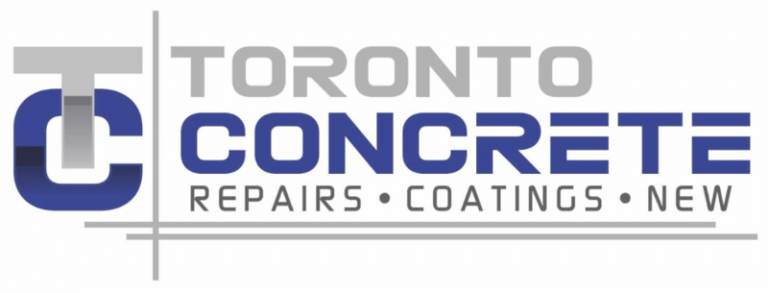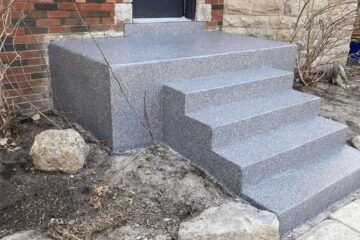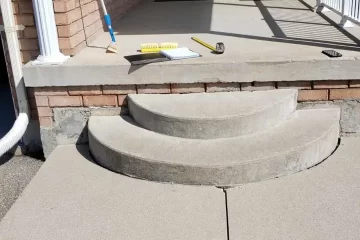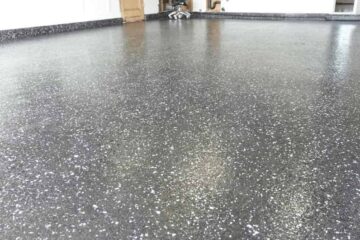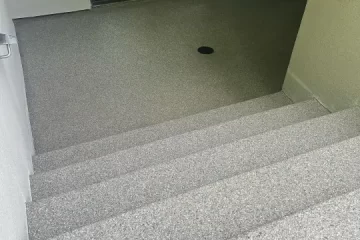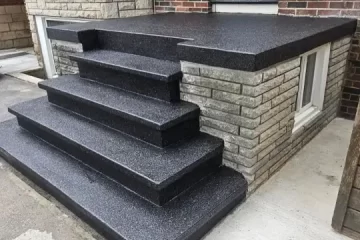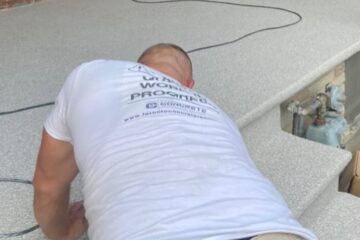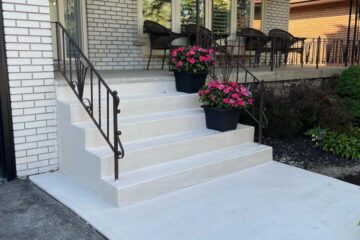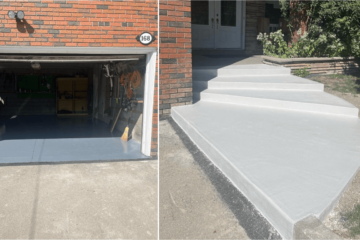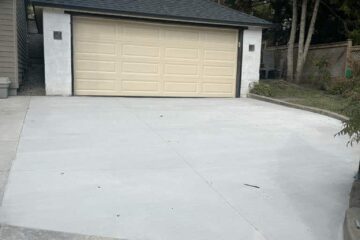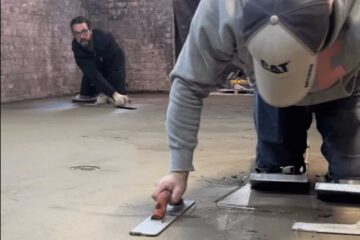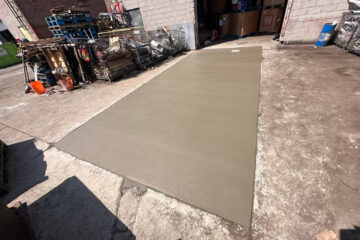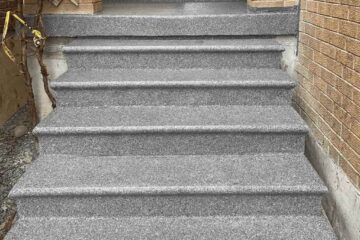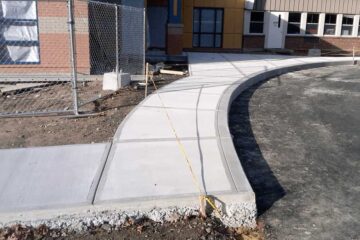You are Here: BLOG / CONCRETE RESURFACING VS. REPLACEMENT: WHICH OPTION IS BEST FOR YOU?
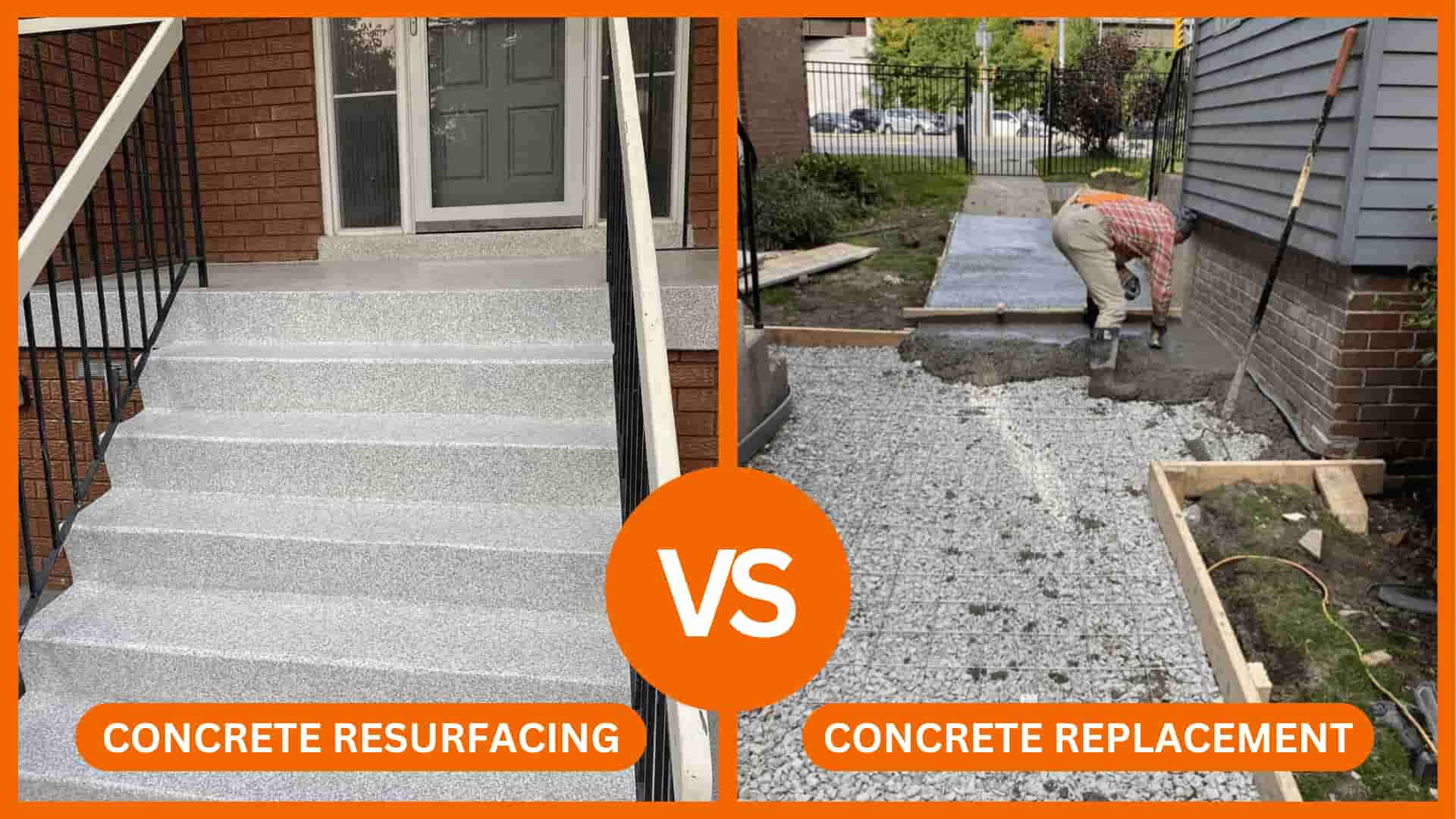
CONCRETE RESURFACING VS. REPLACEMENT: WHICH OPTION IS BEST FOR YOU?
By TorontoConcreteRepair on August 20, 2024
RECENT POSTS
- Porch Makeover Ideas for Toronto Homes: Concrete Solutions for Curb Appeal
- What Is The Difference Between Concrete Resurfacing And Concrete Overlay?
- New Concrete Driveway Installation: A Successful Project by Toronto Concrete Repair Inc.
- How to Remove Water Stains & Discolouration from Newly Poured Concrete
Book a FREE Consultation Call
Concrete is one of those essential materials that you probably don’t think much about until it starts showing signs of damage. Whether it’s your driveway, patio, or garage floor, when cracks, spalling, or pitting begin appearing, it’s time to make a choice—should you go for concrete resurfacing or concrete replacement?
Making the right decision can save you time and money, but it’s not always straightforward. Let’s dive into the key differences and figure out which option is best for your situation.
Understanding the Basics of Concrete Resurfacing
Concrete resurfacing is often seen as a quick and cost-effective solution when your concrete surfaces start to show wear. But what exactly is it, and how does it work?
What is Concrete Resurfacing?
Concrete resurfacing involves applying a thin layer of a cement-based mixture over the existing concrete. This overlay fills in cracks, smooths out rough patches, and can even be customized with decorative finishes like colors, patterns, or textures.
The result? A fresh, renewed surface without the hassle and expense of full replacement.
How Does Concrete Resurfacing Work?
The process typically begins with surface preparation, which includes power washing, grinding, or etching to remove dirt and ensure better bonding. Next, any significant cracks, scaling, or spalling are filled.
After that, the resurfacing compound is applied, binding to the existing surface and hardening into a durable layer. The final step may involve adding anti-slip additives or waterproofing sealants to enhance both safety and longevity.
Common Materials Used in Resurfacing
Concrete resurfacing mixtures are usually made from cement, sand, polymer modifiers, and other bonding agents. For specialized surfaces, options like polymer overlays, epoxy coatings, or microtoppings can be used to deliver extra durability and unique visual effects.
Benefits of Choosing Resurfacing
Resurfacing offers several advantages, especially in terms of ease and affordability.
- Cost-Effectiveness: Resurfacing is a more affordable option than replacement, often costing just a fraction of what a complete replacement would require.
- Time Efficiency: Resurfacing is generally completed in a few days, making it an ideal choice for those who need a quick solution without a significant disruption to their daily activities.
- Enhanced Aesthetics: Resurfacing allows for a wide range of decorative enhancements, including stamped designs, stenciled patterns, or faux finishes that mimic high-end materials like stone or brick.
Understanding the Basics of Concrete Replacement
Concrete replacement is necessary when the damage is more than just skin deep.
What is Concrete Replacement?
Concrete replacement involves tearing out the old, damaged concrete and pouring a brand-new slab. It’s a more extensive process but required when the concrete’s structural integrity is compromised.
The Process Involved in Replacing Concrete
Concrete replacement starts with demolition of the existing slab. Tools like trowels, screeds, and overlay mixers are essential during the preparation phase. The ground is then leveled, compacted, and prepared for the new pour.
Once poured, the concrete is leveled, smoothed, and left to cure using methods like moist curing or curing blankets. Finally, a protective sealant can be applied for added resistance against freeze-thaw cycles or UV damage.
Common Scenarios Where Replacement is Necessary
Replacement is necessary for severe conditions like deep cracks, heavy deterioration, and unstable subgrades that lead to continuous shifting.
Benefits of Choosing Replacement
Choosing replacement provides a more permanent solution with advantages in durability and structural integrity.
- Longevity and Durability: Newly poured concrete can last decades if installed and maintained correctly, offering you peace of mind for many years.
- Structural Integrity: Replacement ensures the entire structure, from the foundation up, is solid and built to withstand long-term stress.
- Complete Customization: A fresh start allows you to customize everything, from thickness and finish to incorporating features like heating systems or integrated drainage.
Differences between Concrete Resurfacing & Replacement
Now that we’ve covered both methods, let’s look at the primary differences.
Cost Comparison: Resurfacing is generally less expensive, running between $5 to $10 per square foot, while replacement typically costs between $10 to $15 per square foot. However, resurfacing may not be cost-effective if severe damage persists.
Time Investment and Labor Requirements: Resurfacing is quicker and less labor-intensive, while replacement is a longer process involving demolition, site preparation, and multiple curing stages.
Durability and Lifespan Considerations: Resurfacing can last 10 to 15 years with good maintenance, whereas new concrete slabs can last up to 50 years.
Aesthetic Flexibility: Both options allow for customization, but resurfacing stands out with its decorative flexibility. Replacement gives you a clean slate but requires additional treatments for visual enhancements.
Environmental Impact and Sustainability: Resurfacing is more eco-friendly, as it reuses existing materials and generates less waste. Replacement, however, can contribute to landfill waste unless recycling practices are followed.
When to Choose Concrete Resurfacing?
Resurfacing is the best option when dealing with surface-level issues and when budget and time are constraints.
- Minor Cracks and Surface Imperfections: Small cracks, pitting, and discoloration can be effectively addressed through resurfacing.
- Desire for a Quick, Budget-Friendly Solution: Resurfacing provides a quick fix with minimal disruption, ideal for those on tight timelines.
- Enhancing the Look of Aging Concrete: If your concrete looks outdated or worn but is still structurally sound, resurfacing offers an easy way to update its appearance without breaking the bank.
When to Choose Concrete Replacement?
In some cases, replacement is unavoidable.
- Major Structural Issues and Deep Cracks: Deep cracks and severe damage indicate that the concrete’s foundation is compromised, making replacement necessary.
- Heavily Deteriorated or Crumbling Concrete: When concrete is beyond repair, replacement is the only option for restoring safety and functionality.
- Long-Term Investment in Property Value: If you’re planning to stay on your property for the long term, replacement offers a more durable and reliable solution.
Concrete Repair Techniques
Several methods are commonly used in concrete repair:
- Crack Injection: Crack injection involves injecting a polyurethane or epoxy sealant into the crack to bond the concrete back together and seal it from moisture.
- Resurfacing: Resurfacing covers larger areas with a new concrete layer, improving appearance and function.
- Patching: Patching involves filling in small holes or chips with a concrete mix or a pre-made patching compound.
Concrete Replacement Techniques
Concrete replacement can involve different approaches depending on the extent of the damage:
- Full Slab Replacement:This involves removing the entire slab and pouring a new one in its place.
- Partial Replacement: Only sections of the concrete are replaced, leaving undamaged areas intact.
- Demolition and Reconstruction: For heavily damaged structures, demolishing and rebuilding from scratch may be the best option.
Comparing Costs: Resurfacing vs. Replacement
- Breakdown of Resurfacing Costs: Resurfacing typically ranges from $3 to $10 per square foot, depending on the design complexity and surface condition.
- Breakdown of Replacement Costs: Replacement costs vary from $8 to $15 per square foot, factoring in excavation, disposal, and installation.
- Hidden Costs and Potential Surprises: Consider possible extra costs like addressing soil conditions, upgrading drainage, or sealing.
Longevity: Which Option Lasts Longer?
- Average Lifespan of Resurfaced Concrete: Resurfacing lasts between 10 to 15 years, depending on maintenance and environmental exposure.
- Average Lifespan of Replaced Concrete: Replacement provides a long-term solution, lasting 30 to 50 years under optimal conditions.
- Factors That Impact Longevity: Climate, traffic load, and proper curing all impact how long your concrete lasts.
Environmental and Sustainability Factors
Resurfacing: A More Sustainable Choice?
Resurfacing is a greener option, reusing existing concrete and reducing waste.
Waste and Resources Involved in Replacement
Replacement requires more raw materials and generates more waste, although some concrete can be recycled.
Eco-Friendly Alternatives for Both Options
Using low-VOC sealants and recycled aggregates can help improve the environmental impact of both processes.
Enhancing Aesthetics: Resurfacing vs. Replacement
Decorative Options with Resurfacing
Resurfacing allows for creative options like stamped concrete or stenciled patterns.
Customization Possibilities with Replacement:
Replacement offers more customization, from thickness to specialized finishes and built-in features.
Matching the Surroundings: Resurfacing vs. Replacement
Resurfacing might be more suitable for matching existing features, while replacement offers total customization.
Case Studies: Real-Life Examples
Successful Resurfacing Projects
Several projects have successfully transformed old driveways using resurfacing without full replacement.
When Replacement Was the Only Option
Some conditions, like unstable soil or deep foundational cracks, require replacement despite previous resurfacing attempts.
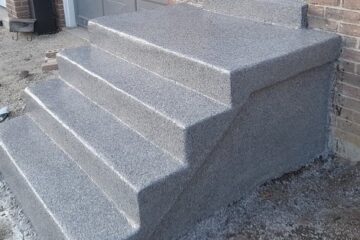
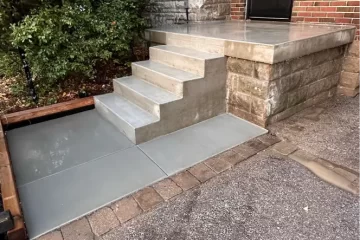
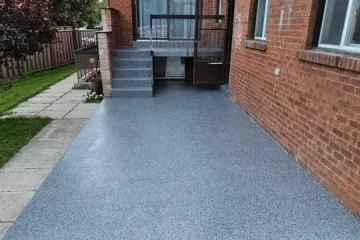
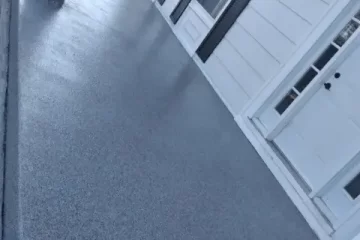
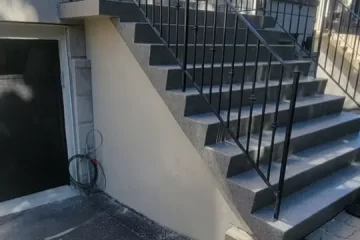
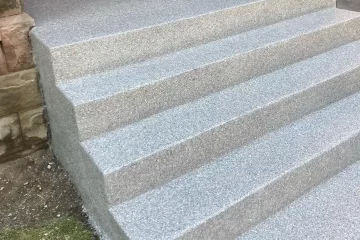
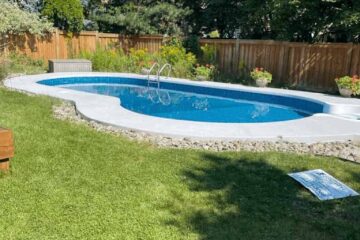
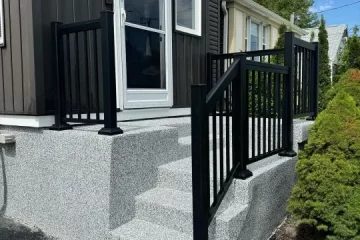
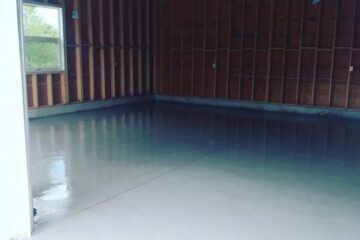
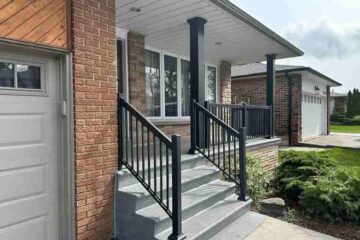
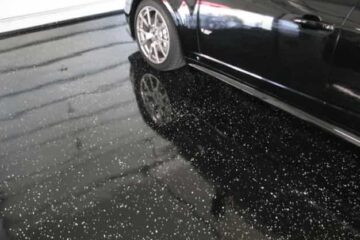
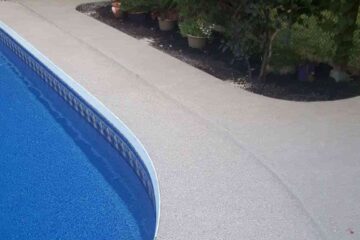
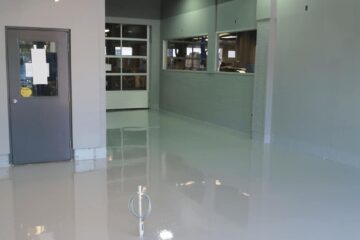
Pros and Cons Summary
Resurfacing Pros and Cons
PROs
- Affordable.
- Quick to install.
- Offers decorative options.
CONs
- Limited to surface repairs.
- Shorter lifespan.
- Not suitable for severely damaged areas.
Replacement Pros and Cons
PROs
- Long-lasting.
- Structural reset.
- Complete customization.
CONs
- Expensive.
- Time-consuming.
- Disruptive process.
FAQs
Can I resurface concrete myself?
While DIY resurfacing kits are available, achieving professional-level results requires skill. It’s generally better to hire a professional to ensure a durable finish.
How long does concrete resurfacing last?
Typically, resurfacing lasts between 10 and 15 years, but this can vary based on climate and maintenance.
What are the signs that concrete needs replacement instead of resurfacing?
Deep cracks, severe unevenness, and crumbling indicate that resurfacing isn’t sufficient, requiring full replacement.
How do I know if my concrete needs to be replaced?
Severe structural damage, deep cracks, and settling are indicators that replacement may be necessary.
Is resurfacing suitable for driveways?
Yes, resurfacing is an excellent choice for driveways with minor surface issues but good underlying structure.
How do I maintain resurfaced concrete?
Clean the surface regularly, reseal every few years, and avoid using harsh chemicals or salts to preserve the finish.
Conclusion
Deciding between resurfacing and replacement depends on the condition of your concrete and your specific needs. For minor surface issues and when budget and time are priorities, resurfacing is a solid option. However, when the concrete is severely compromised, or you’re investing for the long term, replacement is the way to go. Make sure to assess your situation carefully and, if needed, consult a concrete professional to determine the best path forward.
Still if you have any confusion, or want to ask questions more about concrete resurfacing or concrete replacement, you can contact us, we are happy to assist you anyhow. You can reach out to us over a phone call or from email or from our social media page.
